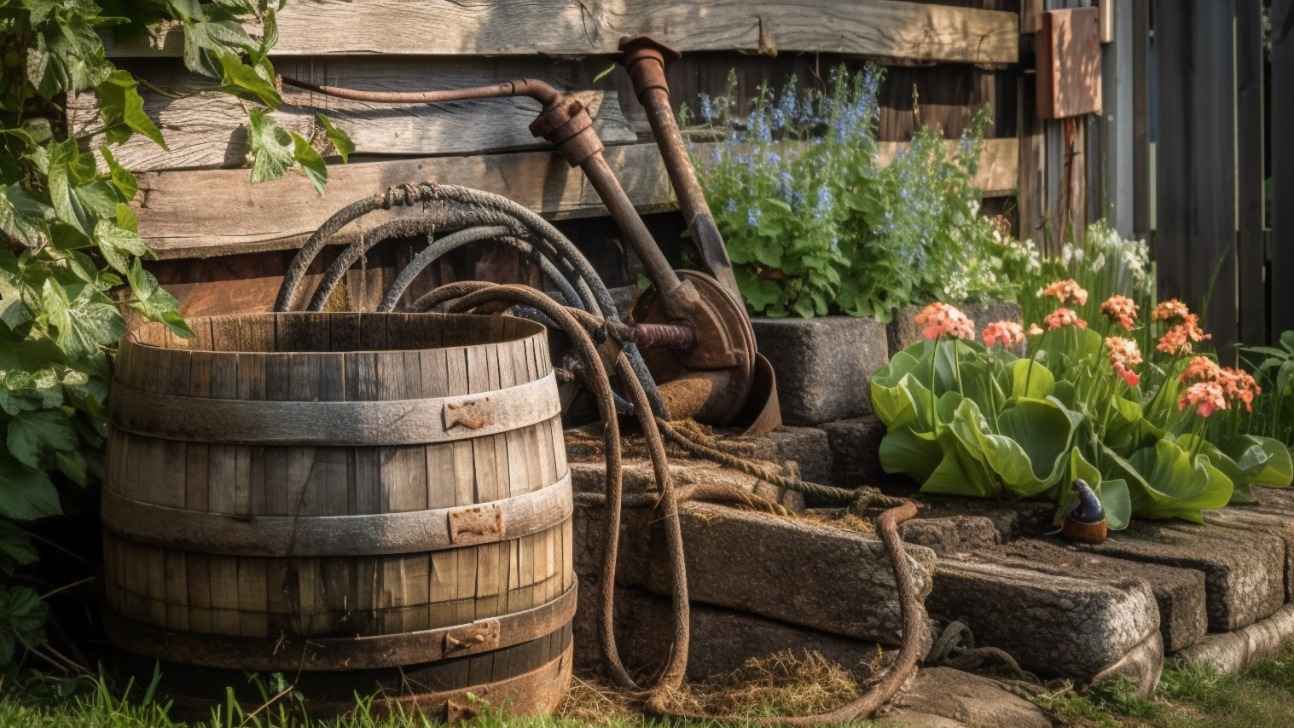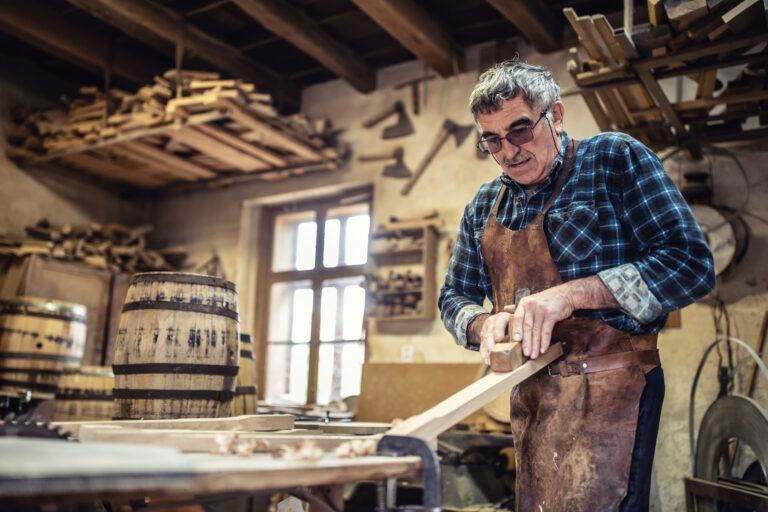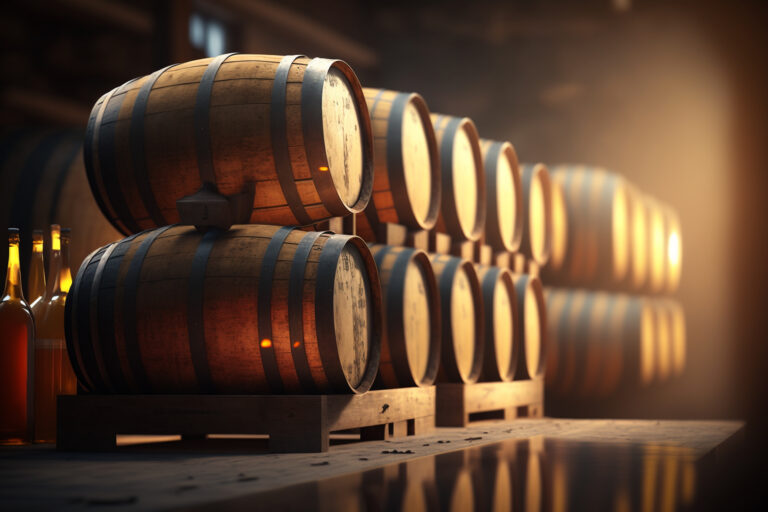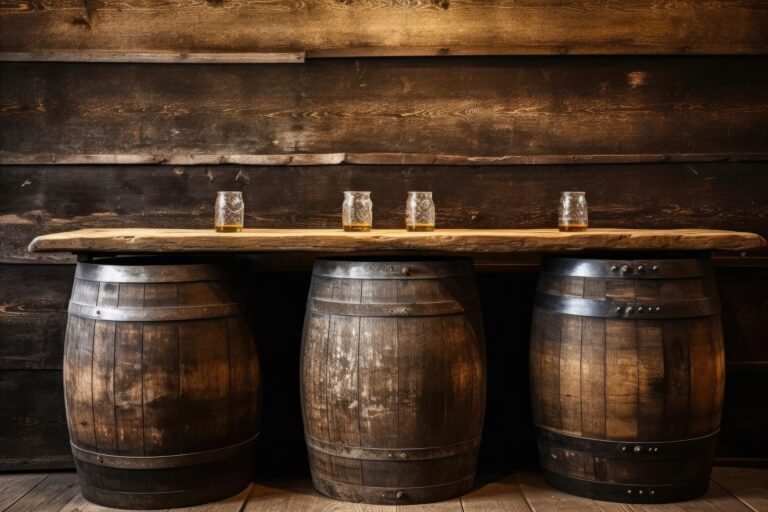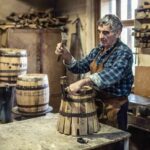You’ve seen those gorgeous photos on Pinterest – leafy greens and radishes sprouting from an old whiskey barrel. It seems like the perfect blend of rustic and homesteading. But before you head to the nearest distillery to procure your own aging barrel, there are a few things you should know. Sure, upcycling sounds eco-friendly, and whiskey barrels impart a subtle smoky aroma that foodies go crazy for. However, those barrels were designed to hold alcohol, not edibles. As trendy as barrel gardens may be, there are risks to be aware of if you want your backyard bounty to be safe as well as Insta-worthy. This article will walk you through what you really need to know before planting your whiskey barrel garden.
The Rising Trend of Using Whiskey Barrels for Gardening
Whiskey barrels have become a popular container for growing vegetables and herbs. As the barrel ages the whiskey, it imparts a subtle flavor to the wood that some gardeners believe translates to the plants. The barrels are also seen as a rustic, decorative planter.
Before using a barrel, make sure it’s food-grade safe. Barrels previously used for chemicals are not suitable and could contaminate your garden. Clean the barrel thoroughly and let it dry completely. You’ll also need to create drainage holes in the bottom, about 1 inch apart.
Fill the bottom of the barrel with gravel for drainage, then add potting mix. The mix should be lightly acidic for most veggies and herbs. Check that the pH is between 6 and 7.
Water the barrel regularly but don’t overwater, which can lead to root rot. The key is keeping the soil consistently damp. Fertilize during the growing season.
Some plants that do well in whiskey barrels include:
- Tomatoes – Try dwarf or bush varieties that won’t outgrow the barrel.
- Lettuce and Spinach – Quick-growing greens are perfect for barrels.
- Herbs – Rosemary, thyme, chives, and parsley all thrive in barrels.
- Radishes and Carrots – Fast-growing root veggies that mature quickly in barrels.
While whiskey barrels can be an attractive planter, it does require proper preparation and maintenance to grow a successful garden. When done right though, they create a perfect blend of rustic décor and culinary delight!
Potential Safety Concerns of Using Whiskey Barrels
While whiskey barrels may seem like an eco-friendly way to grow veggies, there are some potential safety issues to consider.
The wood in used barrels can be contaminated with chemicals that leach into the soil and your plants. Barrels previously holding wine or whiskey may have residues of sulfites, tannins, or other preservatives. These compounds can alter the soil pH and be toxic to some plants.
There’s also a risk of foodborne illness from bacteria like salmonella or E. coli. Properly sanitize and seal any used barrel before planting to avoid contaminating your harvest. Clean the barrel with a diluted bleach solution and rinse thoroughly with water.
Heavy metals like lead may also be present in used barrels. Have the soil tested before planting and again after a few months to ensure levels remain safe. It’s best to only plant ornamentals, herbs, or root vegetables in barrels if there’s any concern.
While upcycling whiskey barrels into planters is an attractive idea, make sure to take proper precautions. A little due diligence will ensure your DIY project produces a bountiful and safe harvest. When in doubt, you might want to stick to untreated barrels specifically intended for gardening. Your health and the health of your garden are worth the investment.
Researching the Materials Used to Make Whiskey Barrels
To determine if whiskey barrels are actually safe for growing veggies, you need to look at what they’re made of and how they’re constructed.
- The Wood: Whiskey barrels are typically made of oak, usually American white oak or European oak. Oak wood is non-toxic, so it poses no danger to the veggies grown inside. Oak also has natural antibacterial properties, so there’s little chance of contamination from the wood itself.
The barrels go through a charring process which caramelizes the sugars in the wood and helps impart flavor to the whiskey. While charred wood could potentially leach chemicals, studies show little to no risk, especially after the barrels have been used to age whiskey. Any compounds would likely break down over time with weathering and reuse. - The Metal: The barrels are held together with metal bands and hoops, often made of steel. As long as the hoops are secure and not corroding or rusting, they should not pose any risk. However, corroding metal could potentially leach chemicals into the soil, so inspect the bands regularly and avoid any visibly rusting barrels.
- Sealing and Reuse: Properly cured and maintained barrels should not leak liquid or allow the wood to rot. However, barrels that were used to age harsher spirits may be more porous or prone to leaking. For veggie gardening, it’s best to use barrels that aged smoother spirits like bourbon. Reusing barrels also allows more time for the wood and any compounds to break down to inert components before planting veggies.
So while whiskey barrels seem to check out as safe for growing veggies if properly prepared, maintained, and reused, do some research on your specific barrels to confirm there are no risks associated with the type of oak, charring method, or previous spirits aged. When in doubt, you may want to consider repurposing the barrels in another way, like crafting them into furniture or planters.
Understanding How Whiskey Barrels Are Made
Whiskey barrels are made from oak, usually American white oak or European oak. The wood is cut into staves that are shaped into a barrel.
The staves are heated and bent into shape, then held together with metal hoops. The barrels are toasted or charred on the inside to impart flavor to the whiskey.
The charring caramelizes the wood, releasing vanilla and caramel notes. It also helps filter the whiskey by absorbing undesirable compounds as the liquor ages. The heat causes the wood to expand and swell, sealing the barrel.
Over time, the whiskey penetrates deep into the wood, absorbing compounds that give aged whiskeys their distinctive taste. The angel’s share, the portion that evaporates, further concentrates the flavor.
Oak barrels are ideal for growing veggies and herbs because they are food-grade, inert, and breathable. The char protects the wood, and the swelling seals the barrel well. However, be very careful when using a barrel that held spirits, as there may be alcohol residues that could be unsafe for plants and soil life. Rinsing the barrel several times and letting it air out will help, but for the best results, use a barrel designated specifically for gardening.
Identifying Harmful Substances That May Leach From Barrels
As convenient as whiskey barrels seem for planters, there are some harmful chemicals that can leach into your soil and plants.
- Lead: The lead used in barrel construction can contaminate the wood. As the barrel ages, small amounts of lead can leach into the liquid stored inside. While minimal, any exposure to lead should be avoided.
- Other Metals: Copper and zinc bands are also commonly used in barrel construction. These metals are toxic in high amounts and may leach into the soil, especially if the barrel was improperly prepared before using as a planter.
- Tannins and Lignins: The wood of barrels – typically oak – contains natural compounds like tannins, lignins, and phenols that can alter the pH of the soil and inhibit plant growth. These compounds tend to leach more in freshly emptied barrels versus barrels that have been repeatedly rinsed or composted.
- Mold and Bacteria: The dark, damp, and nutrient-rich environment of barrels is ideal for molds, fungi, and bacteria to grow. Some strains can be harmful to plants and humans. Cleaning and sanitizing the barrel before planting is critical to avoid contamination.
While barrels seem ideal for upcycling into planters, it’s important to properly prepare them to avoid issues. Cleaning, sanitizing, and composting the barrel for at least one growing season will help make it safer for planting veggies and herbs. If done right, barrels can make an attractive and long-lasting planter for your garden.
Testing Your Barrel for Safety Before Planting
Before planting anything edible in a used whiskey barrel, it’s critical to make sure it’s food-safe. Barrels previously used for alcohol can leach chemicals into the soil that you don’t want in your veggies or herbs.
- Test for Lead: Older barrels may contain lead, which can contaminate the soil. To check, purchase a lead test kit and follow the directions to get a sample from inside the barrel. If lead is detected, do not use the barrel for planting. Consider repurposing it as a planter for non-edible plants or decor item.
- Clean and Sanitize: Scrub the inside of the barrel with a detergent to remove any residue. Rinse well with water. Next, sanitize the barrel using a solution of equal parts water and vinegar or a commercial barrel cleaner. Let it sit, then rinse again with water. Allow all parts to dry completely to prevent mold growth before adding soil.
- Re-Treat the Wood: The inside of the barrel may need to be re-treated or sealed before planting. Use a food-grade sealant, wax, or oil made for use on barrels, and apply as directed. Curing the wood will help prevent the transfer of any chemicals to the soil and your plants.
- Test the Soil: Once prepared, fill your barrel about 1/3 full of potting soil and compost or composted manure. Test the soil with a kit to check pH and nutrients and make any amendments needed for your intended plants. Then finish filling the barrel with tested, amended soil before planting.
Checking these factors will help ensure your whiskey barrel planter produces safe, delicious homegrown veggies and herbs. Happy planting!
Best Practices for Preparing and Maintaining Whiskey Barrels
Once you’ve acquired whiskey barrels to use as planters, preparing them properly is key. Some best practices to keep in mind:
- Clean the barrels thoroughly. Use hot, soapy water to wash the interior and exterior, scrubbing away any residue. Rinse well and allow to dry completely before using.
- Consider sealing the wood. Whiskey barrels are porous, so sealing the wood with a food-grade sealant helps prevent rot and protects your plants. Look for a sealant specifically for use on oak barrels or food-grade wooden planters.
- Drill drainage holes. Add several holes in the bottom of the barrel to allow excess water to drain and prevent root rot. Space the holes evenly around the bottom, about an inch up from the base.
- Fill the base. Add a layer of gravel, stones, or ceramic shards to the bottom of the barrel before adding soil. This helps with drainage and creates air space for roots.
- Use well-draining soil. A lightweight potting mix, compost, or container garden soil works well for barrel planters. Avoid heavy, dense soils that won’t drain properly.
- Water carefully. Only water when the top few inches of soil are dry. Water slowly and thoroughly, allowing the water to soak in and drain out the bottom. Never leave standing water in the barrel.
- Fertilize during the growing season. Use a balanced, all-purpose fertilizer once a month during the peak growing season. Reduce or stop feeding as fall approaches and growth slows down.
- Repot if needed. Watch plants carefully, especially in the first year. You may need to move them into a larger barrel if they become pot bound. When repotting, remove about 1/3 of the roots and soil before placing in a new barrel.
Vegetables Best Suited for Whiskey Barrel Planting
Some veggies thrive when planted in used whiskey barrels. The aging wood provides excellent drainage and aeration for roots, and the barrels’ rounded shape makes an attractive planter. Some top choices:
- Leafy Greens: Lettuce, kale, spinach, and Swiss chard all do well in whiskey barrels. Their shallow root systems appreciate the drainage, and the wood helps keep soil temperatures cool in summer.
- Herbs: Rosemary, thyme, chives, mint, and parsley are ideal for whiskey barrels. Their aromatic oils are enhanced by the wood, and they require similar light, drainage, and soil conditions.
- Radishes: Quick-growing radishes are a perfect match for whiskey barrels. They mature in just a few weeks, so you can enjoy multiple harvests over one growing season. Their crisp texture and spicy flavor are amplified by the barrel wood.
- Cucumbers: Compact cucumber varieties like ‘Spacemaster’ and ‘Salad Bush’ produce an abundance of fruit from a single barrel. Their vining stems appreciate the barrel’s rounded shape for climbing and support.
Whiskey barrels give new life to wood that’s steeped in history. By choosing veggies and herbs with shallow roots and a preference for well-drained, organic soil, you’ll be rewarded with a bountiful harvest and an attractive garden accent. What better way to enjoy homegrown produce than with an aged whiskey from the same wood? Santé!
FAQ: Answering Common Questions on Whiskey Barrel Garden Safety
Are whiskey barrels actually safe to use for growing food?
Many gardeners have asked this, and the short answer is yes, with some precautions.
Will the wood contaminate the soil?
As long as the barrel was properly cleaned and cured before using, the wood itself won’t contaminate the soil or leach chemicals into your veggies. However, it’s best to line the inside of the barrel with a food-grade sealant to be safe.
What about the whiskey residue?
A properly prepared barrel will have been rinsed and sterilized, removing any remaining whiskey residue. As an extra precaution, fill the barrel with water and let it sit for a few days before dumping and planting.
Do I need to treat the wood?
Yes, it’s best to treat whiskey barrel planters to extend their lifespan. Apply a sealant, like beeswax or linseed oil, to the inside and outside of the barrel. Re-treat every year or two. This protects the wood and prevents rotting.
How long will a whiskey barrel planter last?
With proper care and maintenance, a whiskey barrel planter can last 3-5 years. The wood eventually breaks down, even with treatment. At the first sign of deteriorating wood or rot, it’s best to replace the barrel.
Is it safe to grow root veggies or greens?
Root veggies can be tricky in barrels since they require deep soil. Greens, herbs, tomatoes, and bush beans do well. Be cautious with leafy greens, and thoroughly wash before eating.
Whiskey barrel gardens can be a charming addition, as long as you take some basic safety precautions. With the right care and maintenance, you’ll be harvesting homegrown veggies from your barrel garden in no time!
Final Thoughts
You’ve seen the hipster hype around using whiskey barrels to grow veggies and herbs, but is it really safe? As with anything, moderation is key. While the barrels can impart an interesting flavor to the food and the wood helps with drainage, be aware of the risks. The barrels were made to hold alcohol, after all, and can leach chemicals into the soil. Do some research on the specific types of wood and any treatments used. And definitely don’t use a barrel that held anything toxic. If done right though, whiskey barrel gardens can be a fun, stylish way to grow your greens. Just be sure to take proper precautions – your health and safety should be top priority. But when it comes to adding a little extra flavor to life’s simple pleasures, whiskey barrel gardening might just fit the bill.
